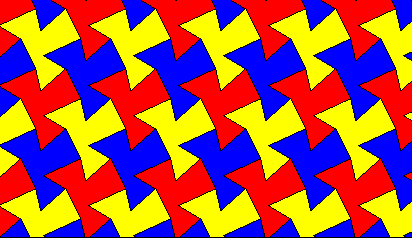Mathematics is everywhere in the world of Art for example, in symmetry and patterns, in architecture and even clothing. Islamic art is a good example of tessellation as it comprises of pattern and repeats this throughout which creates a wonderful image to look at. It can be found in many forms such as religion, architecture and pictures. During this workshop for Discovering Mathematics, we were encouraged to try some paper folding to create various different shapes in order to promote the potential learning that could be had in our own classroom. It is also an effective way to make leaning concepts in maths different and fun!


Tessellation is the term known for shapes that fit perfectly together without any gaps showing or overlapping occurring. We spent some time figuring out what shapes we were supplied with would tessellate and which ones wouldn’t. Over the course of the hour workshop, I learnt that shapes would only tessellate if the angle they made added to 360 degrees upon the vertices meeting. A vertice is where two or more straight lines meet – I learnt that on placement when my class sang the wee song!
Typical examples of tessellation include regular shapes (where all sides are the same), pieces of a jigsaw, and tiles in the form of animals which cover the surface in a symmetrical way.


